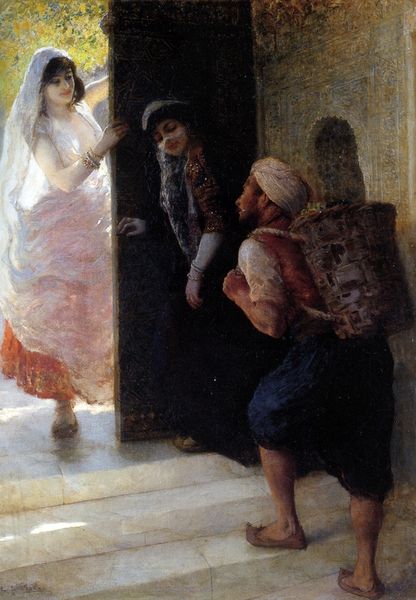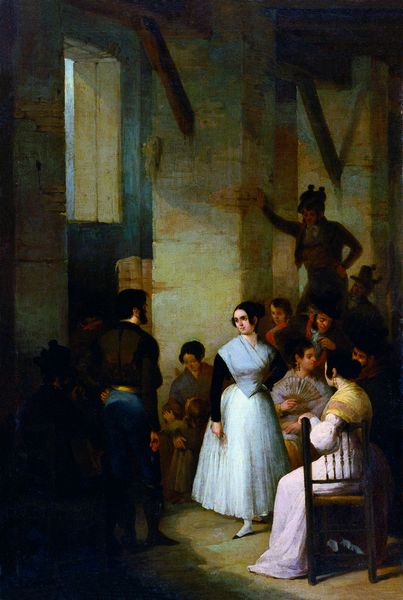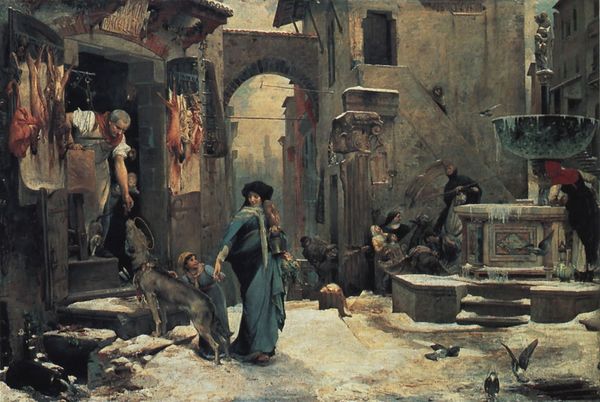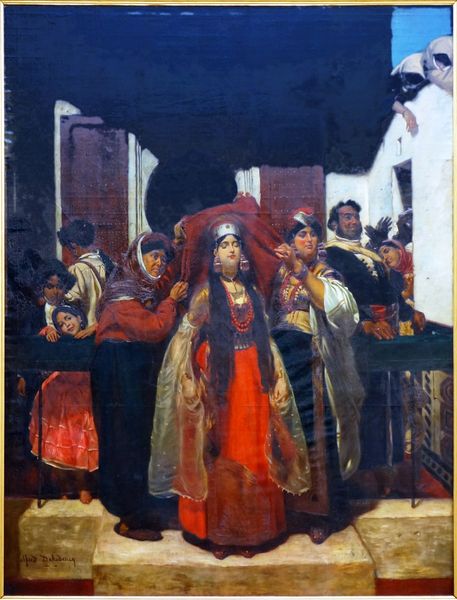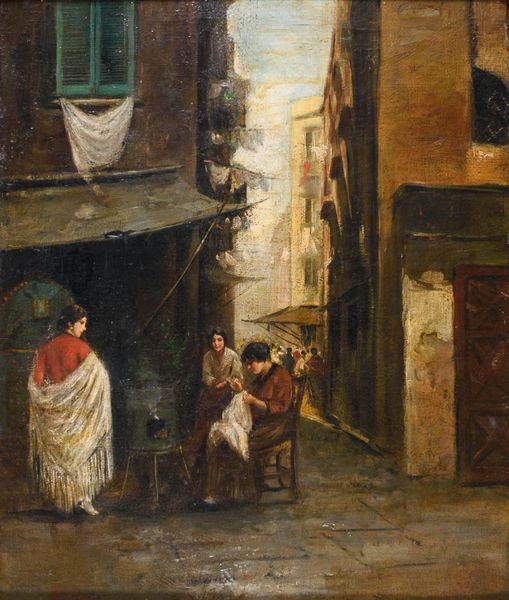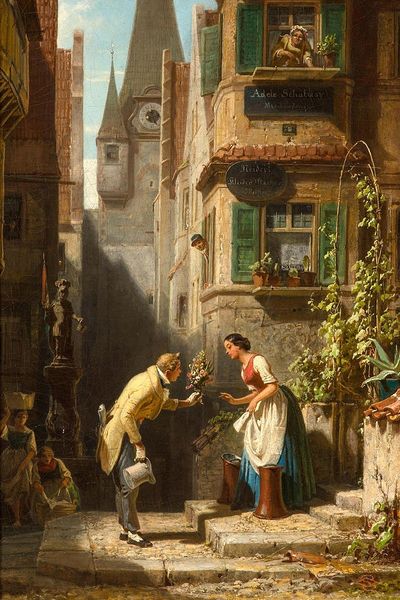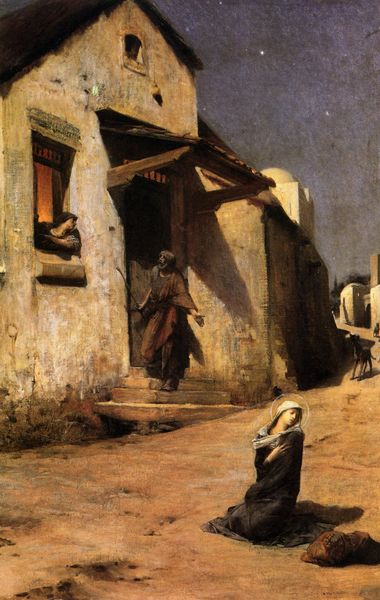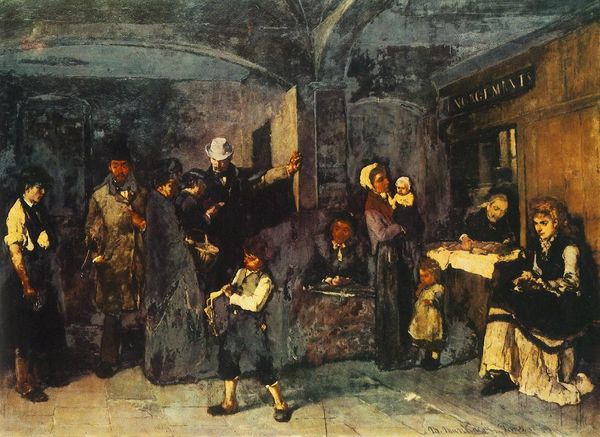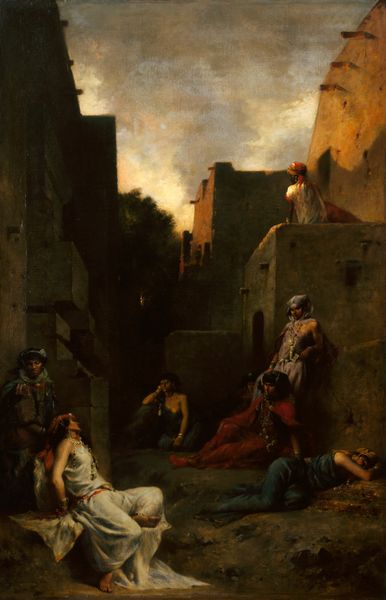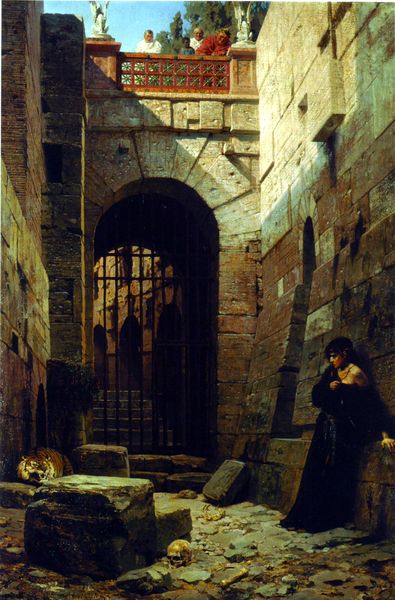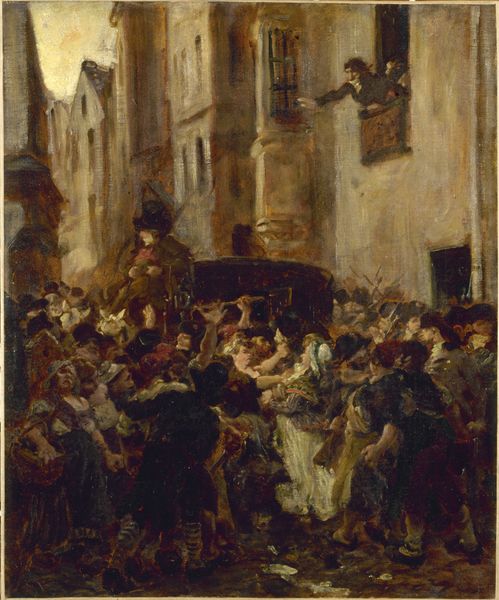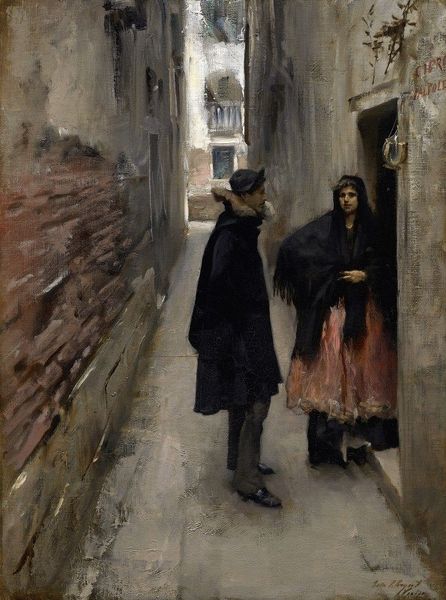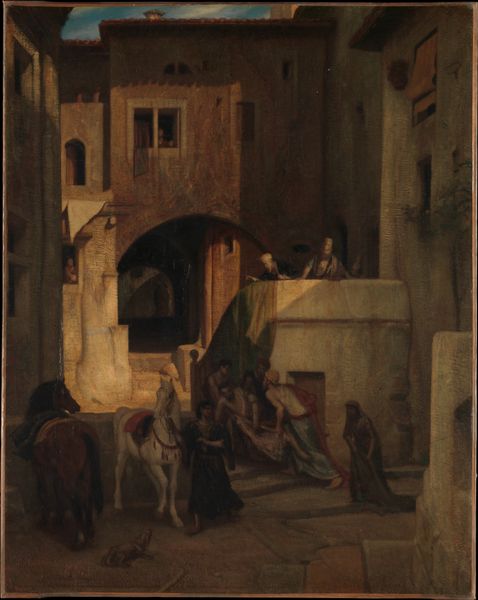
painting, oil-paint
#
portrait
#
narrative-art
#
painting
#
oil-paint
#
painted
#
figuration
#
underpainting
#
romanticism
#
cityscape
#
genre-painting
Copyright: Public domain
Curator: Standing before us is Joaquín Domínguez Bécquer's "Rendezvous in the Street," painted in 1841. Domínguez Bécquer captures a vibrant scene with his characteristic flair for detail and romantic sensibility. Editor: It strikes me as a hushed sort of painting, doesn’t it? Even though it's teeming with figures. The palette is mostly muted, shadowy, except for that astonishing pop of green in the woman’s skirt. Feels almost like a dream… or a secret. Curator: Yes, there’s a beautiful chiaroscuro at play. The dramatic lighting guides our eye, highlighting certain figures while others remain partially obscured, contributing to the intrigue. Look at the architecture, too—how the buildings seem to almost lean in, adding to the scene's feeling of enclosure. Editor: Enclosure... that’s the perfect word! And everyone seems caught in their own little world, having these furtive exchanges. I find myself wanting to know all their stories. Is that gentleman trying to orchestrate something? And what about those veiled figures on the right? What secrets are they guarding? Curator: It’s wonderful how Domínguez Bécquer encourages us to invent narratives, isn't it? You know, in terms of formal construction, the use of verticals, and horizontals gives a very classical impression. The whole composition, in my view, pivots around the tension and balance of figures and space. The painting teases with suggestion rather than spelling out facts. Editor: Teasing, exactly! And the backdrop almost becomes a character itself with those worn textures, the suggestions of faded grandeur... There’s something eternally human captured here, I think. We're forever eavesdropping on the lives of others, reading into fragments, trying to piece together what it all means. Even when we might know full well it has nothing to do with us. Curator: The romantic style emphasizes those fragments and momentary intersections in human relationships; the artist shows them but doesn't force closure to any narrative that he might suggest through figures. It’s lovely to get a snapshot of how fleeting and changeable human moments are through this oil-on-canvas format. Editor: So, we are left to interpret the whispers on the street. Very well painted suggestions rather than assertions of what one must take away from the subject on display. A subtle narrative in disguise. Curator: Agreed. Bécquer offers a slice of 19th-century urban life and, more importantly, holds up a mirror to our innate desire for connection and intrigue. Editor: Nicely observed. I am intrigued!
Comments
No comments
Be the first to comment and join the conversation on the ultimate creative platform.
